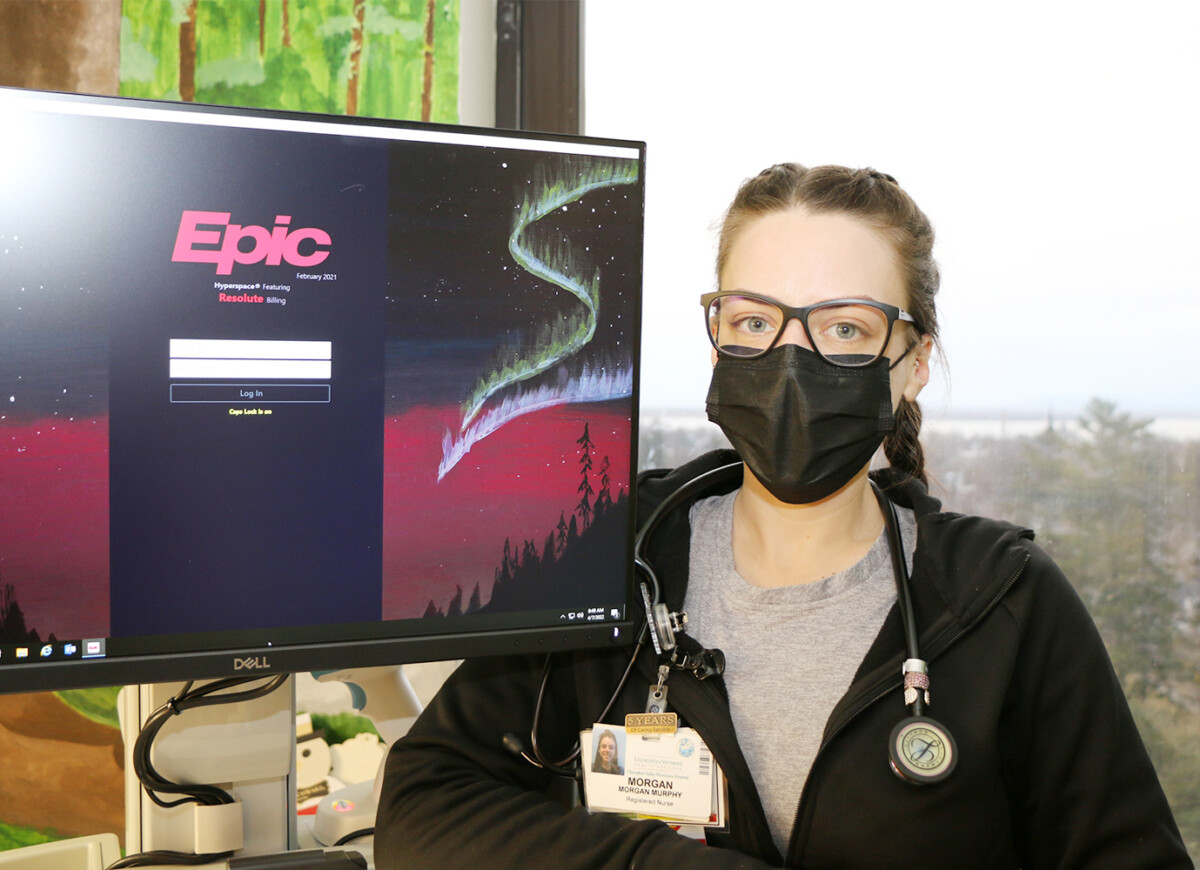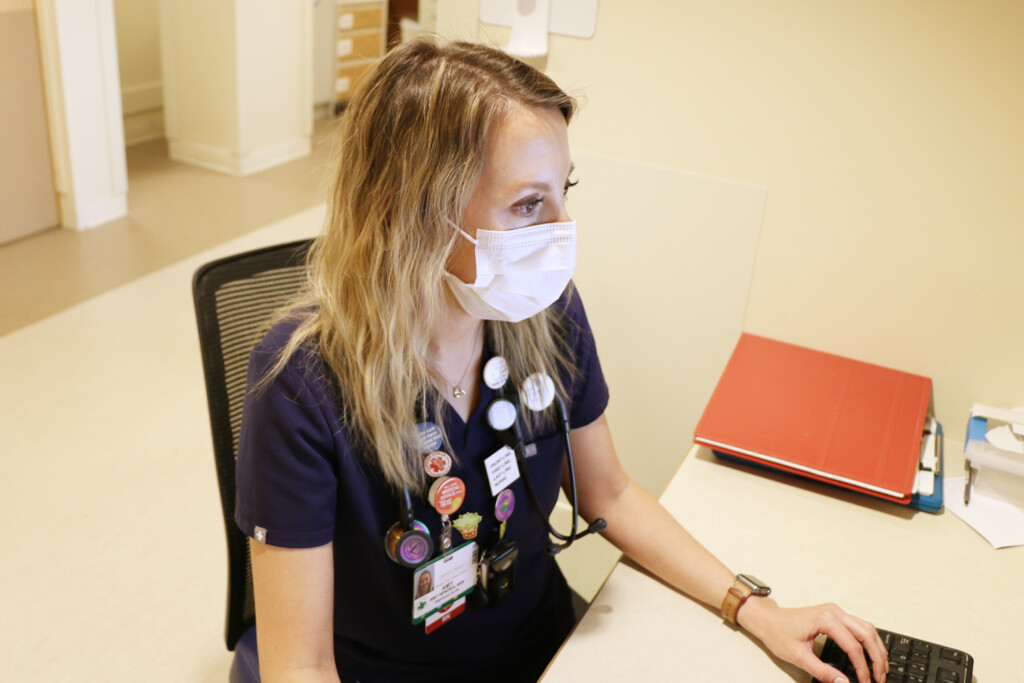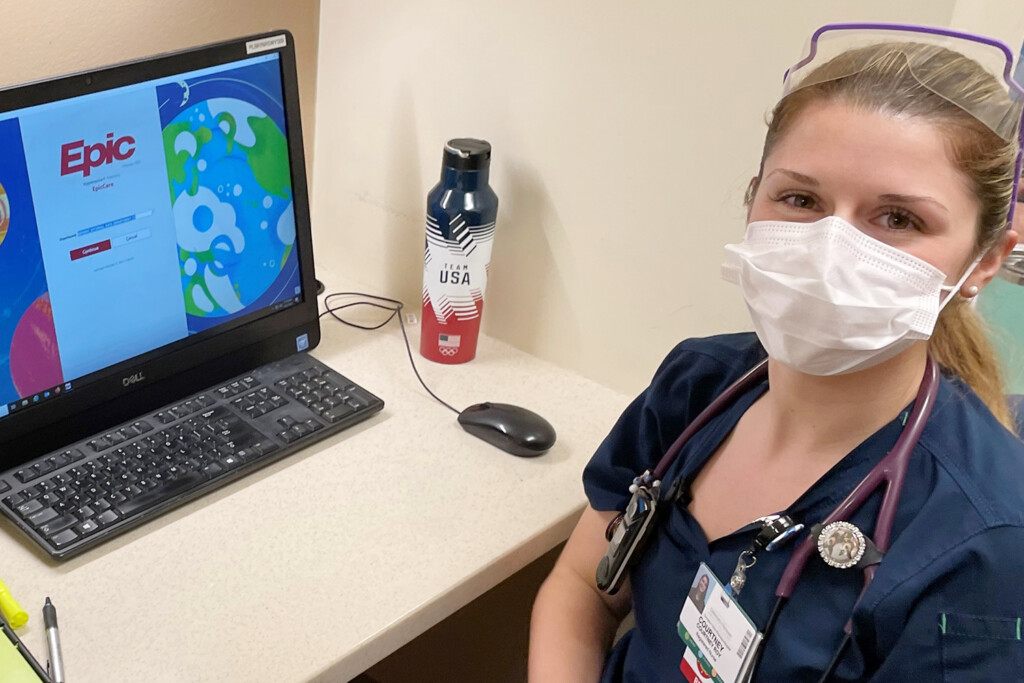An Epic Transformation

History was made in the early morning hours of Saturday, April 2, 2022. UVM Health Network – Champlain Valley Physicians Hospital joined fellow UVM Health Network affiliates Alice Hyde Medical Center and Elizabethtown Community Hospital in going live with Epic, marking the third and final phase to connect UVM Health Network’s affiliates and ambulatory practices to a single Electronic Health Record system.
It is a transition that is having a meaningful impact on our people and our patients, providing a seamless experience at the bedside that is leading to a whole new level of engagement.
We are moving to having one standard of care, one patient experience, one patient record, one registration, and one relationship with our Network. In the end, this will provide quick access for the safe, coordinated, efficient and quality care that every member of our team strives for.
Heather Nolette, MSN, RN, Clinical Informatics Manager, Champlain Valley Physicians Hospital
The switch-over happened following years of planning and hundreds of hours of training and preparation in the months leading up to go-live. Nurses played a crucial role in supporting that work and each other to get the system up and running.
Nursing Ordersets
One of the many key elements that is required for nurses to do their work at the bedside with Epic is properly built ordersets. Without them, things like EKGs and lab tests cannot be ordered and nurses may be practicing outside of their scope.
“How I do my job may look different in terms of a computer screen. But what I do as a nurse in patient care hasn’t changed.” – Amy Hendrix, BSN, RN
As nurses began participating in activities to prepare for go-live, they recognized an opportunity for practice changes around ordersets. A team of bedside nurses and nurse leaders was pulled together, including Amy Hendrix, Jenifer Cote, Patti Beauharnois, Kayleigh Rushford, Abby Bennett and Colleen Bell.

We found that while the Epic team was very knowledgeable in EMR, a nursing perspective would be very beneficial to ensure we would have what we needed for our workflows at the bedside. While we were able to adapt a lot of things from our affiliates The University of Vermont Medical Center and Central Vermont Medical Center thanks to their go-live experiences, there are differences in regulations, protocols and wording with New York State that matter.
Amy Hendrix, BSN, RN from Progressive Care at Champlain Valley Physicians Hospital
Hendrix and her colleagues reviewed dozens of ordersets, adding, “We began playing around with the orders in Epic, going through each one and figuring out what we could adapt and what had to be built for us.”
“They were able to help standardize workflows addressing both New York and Vermont regulatory requirements,” Heather Nolette, MSN, RN adds. “Their work promoted systems, workflows and functionality based on scientific and evidence-based practices. All while keeping in mind the overarching goal of designing workflows that decrease the documentation burden without compromising patient safety and data. What this group achieved was a big win for care teams at CVPH and across the entire Network.”
Ultimately, the group made changes to 24 ordersets that were built into the system for the hospital. Their attention to detail also led to the flagging of items that improved ordersets for all UVM Health Network users. Hendrix and her team continued to meet regularly in the weeks leading up to go-live, supporting dry runs, reviewing processes and suggesting potentially helpful tweaks along the way. And on April 1, as Hendrix worked to re-admit patients into Epic ahead of the cutover the following morning, she saw all of that work from the group had paid off.
“Seeing those orders attached with the patients, and recognizing the work we had done with specific wording and that kind of thing, that was pretty cool. I could say hey, I helped do that,” she says.
Epic Success
The rollout of a project as impactful as this is going to have challenges. The Epic experience was not the same for everyone, and while there have been bumps in the road, the nursing team knows there have been many success stories. And nurses are finding many benefits with the new EHR. That includes efficiencies in Epic that make documentation easier and give a more clear picture of the patient.
“I like that everything is in one program,” Krystal Smith, BSN, RN says. “We don’t have to open multiple programs to chart and then do medications. It’s going to be easier to find records from other facilities.”

I do like how it gives you checks for when you get stuff done. I am able to get stuff done faster, and then I have more downtime so that I can actually go spend more time with my patients. There are a lot of situations where I’m finding less of a paper trail. Doing admissions and discharges are easier.
Courtney Roy, RN
“It’s nice, because it’s all attached to our entire health care system,” says Emily Benway, BSN, RN, CMSRN, Assistant Nurse Manager. “We can view what our patients have had done in other hospitals. We can see doctor appointments. You see everything more holistically. And you don’t have to click through a hundred different things to find that information. It’s all right in front of you, presented in any way you like, and often, there are multiple easy ways to get to that information.”
Epic is also playing a significant role in the education process, as Hendrix says.
“It’s preparing the next wave of nurses. They can chart in real time. They can do everything in real time. And it’s simple for one of our registered nurses working with that student to go over the documentation together and co-sign as needed. Our old system wasn’t really built for the nursing students. Now, they’ll get a chance to use a HER and practice more like a nurse. I had an instructor who was very excited that we made this switch to Epic, and that nursing students can learn from it.”
Nolette shared how an encounter with a patient that showed how Epic is already making a big difference in the community, as well.
“There was a person obtaining treatment, and they had to go between two different offices for blood work. And they said to me, ‘Hey, there’s this awesome thing I just heard about today, and it’s called Epic.’ And this individual talked about not having to worry about sending labs because it shows up in Epic.”
“That was a great thing,” she says. “It was one less stress the patient had to deal with in addition to the diagnosis. Even people in the community are talking about Epic.”
